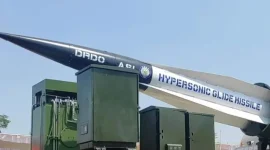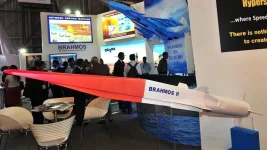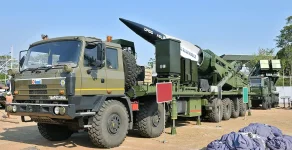- Views: 3K
- Replies: 6
India's ambition to master hypersonic technology is taking a significant step forward, with newly revealed images showing an updated design for its Hypersonic Technology Demonstrator Vehicle (HSTDV).
The new model, developed by the Defence Research and Development Organisation (DRDO), displays substantial engineering changes since its landmark test flight in 2020, signalling a clear and focused progression toward creating operational hypersonic systems.
This progress places India in a select group of nations, including the United States, Russia, and China, who are actively developing this next-generation military capability.
The HSTDV program first achieved international recognition in September 2020. In a pivotal test, the DRDO successfully launched the unmanned scramjet vehicle from the Dr. APJ Abdul Kalam Island off the coast of Odisha.
Carried to an altitude of 30 kilometres by a solid rocket booster, the demonstrator separated, ignited its scramjet engine, and sustained hypersonic flight at Mach 6 (six times the speed of sound) for over 20 seconds.
This successful trial validated India's capabilities in the critical technologies required for future systems, including advanced long-range missiles and potential platforms for high-speed reconnaissance or reusable space launch vehicles.
Analysis of the latest HSTDV design reveals crucial modifications aimed at enhancing stability and performance under the extreme physical stresses of hypersonic flight.
One of the most prominent changes is the replacement of the previous twin-tail fin configuration with a single, larger vertical fin. This redesign is a deliberate engineering choice to improve directional stability and control as the vehicle travels through the atmosphere at speeds exceeding 7,000 km/h, helping it better manage the immense aerodynamic pressures and temperatures.
Furthermore, the vehicle has been fitted with newly designed cropped-delta wings. These wings are engineered to provide superior aerodynamic performance and maneuverability at hypersonic velocities.
Their specific shape is also vital for managing the intense heat and complex shockwaves that form around the vehicle during flight. These refinements to the control surfaces are essential for ensuring the vehicle remains stable and can be steered accurately while travelling at extreme speeds, a key requirement for any future missile system based on this technology.
Developing hypersonic vehicles presents immense engineering hurdles, particularly with their air-breathing scramjet engines. These engines must function while air is flowing through them at supersonic speeds, demanding incredibly robust materials and precise control systems to maintain combustion.
The evolutionary changes seen in the HSTDV's airframe and control surfaces suggest that DRDO scientists are successfully refining their design to create a practical and effective blueprint that can meet these challenges.
The strategic importance of these developments is profound. Hypersonic weapons are highly sought after by global military powers because their sheer speed and ability to maneuver in flight make them extremely difficult for current missile defence systems to track and intercept.
India's consistent and visible progress with the HSTDV program is a powerful statement of its growing technological expertise and its determination to become a leading force in the critical field of hypersonic technology.




